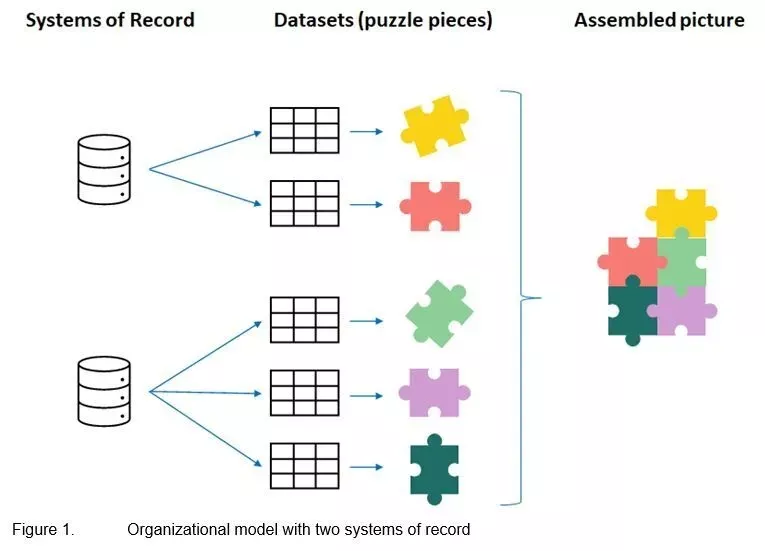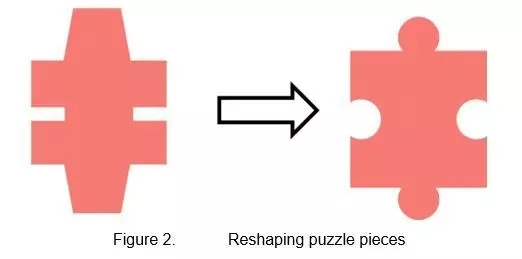October 6, 2022

Creating a "common operating vision" from disparate data sources
Imagine a common tool, be it a dashboard, report, automated alert, or combination thereof, that enabled you to understand the current and future condition of your entire utility infrastructure: the hazards facing it and the risk of failure down to the individual component level.
The tangible impacts that such tools can have on daily operational decisions about assets and safety for utilities are transformative. Today, most utilities are busy developing risk models for this express purpose — to serve as the primary means of converting data into decisions around investments, repairs, and service capacity, including when to temporarily shut off service. Still, while data-driven risk management models are nothing new, and despite their clear benefits, why have so few utilities succeeded in scaling their risk models effectively to the enterprise level?
Answering that question means starting with the decisions to be made and assembling the data needed to inform those decisions and empower your risk model.
Building a shared vision
All utilities are constantly generating data. Your utility is generating data as you read this article, and it will keep generating data as you move on to other tasks. On any given day for a utility, inspectors are assessing wood distribution poles and documenting their findings, contractors are re-conductoring transmission lines and filing their work, and engineering teams are designing new substations, all while emergency repair work may be happening at underground vaults that were accidentally disturbed by third parties.
The question is, as some hazards resurface and new ones emerge, how vulnerable are we and what can be done about it?
The volume of data a utility generates can be overwhelming, but managing its variety is an even bigger challenge. Put another way, it's possible to calculate risk for the individual elements mentioned above, but executing at the enterprise level means creating a shared vision, better called a common operating picture (COP). A COP is not only a model — it's a way of making all the different types of data your organization compiles talk to each other, providing the whole of your organization with a roadmap for making measurably effective decisions.
A COP is a technical blueprint for a transformative process that must leverage data gathered from the entire organization to enable real-time, cross-disciplinary quantification of evolving risks. Much like roadways establish the parameters on which vehicle designers have enormous opportunity to innovate, the COP and its requirements establish the parameters on which your organization can innovate to achieve digitally driven decision-making success.
Putting the pieces together
Most utilities maintain multiple systems of record for their data. These systems may be maintained by different teams using different data management systems with different schemas and often aren't designed to share data easily. Getting these various systems to speak coherently with each other is equivalent to assembling a jigsaw puzzle with pieces pulled from different boxes.
To keep things simple, Figure 1 shows a simplified organizational model with just two systems of record, each with two or more data sets that must be integrated to model risk effectively at an enterprise level. If we imagine each of these data sets as separate puzzle pieces, with their shapes representing their schemas and connecting edges their keys, the challenge of stitching together a variety of puzzle pieces (data sets) into a coherent picture becomes clear.

Generally, the puzzle pieces don't readily come together as shown above, as many data sets are designed and built for local use cases rather than assembly into a global framework. In fact, most utilities must carefully shape each of their data sets to ensure they fit together, as depicted in Figure 2.

To do this, utilities must look at the requirements of the COP to establish how the data sets need to be prepared to ensure they can fit into the bigger picture. For example, assigning properties to a conductor spanning between two transmission structures can be challenging since the conductor may not be identified at the span level but rather as a segment that spans multiple transmission structures. The latter is analogous to the rough-shaped edges of the puzzle piece on the left in Figure 2. The conductor spanning multiple segments requires careful working of the data set to break it down into the right level of detail to make it fit, as in the puzzle piece on the right in Figure 2. This exercise must be repeated for all puzzle pieces, eventually bringing them together into a COP.
Common vision, enterprise decision-making
Climate change is an evolving state of uncertainty, where the rules utilities previously followed to operate their infrastructure are changing faster than assets can be replaced or upgraded. We all know our infrastructure is vulnerable. We've seen it in action. The question is, as some hazards resurface and new ones emerge, how vulnerable are we and what can be done about it?
To understand our present vulnerability and project how that vulnerability will change with time, an effective COP can be used to communicate risk across the whole of a utility organization. However, for a risk model of any kind to truly reach scale, decision-making must be enabled at the enterprise level. This means enabling a variety of stakeholders and experts to look at the same problem from different points of view. By developing a COP that assembles a complete picture to support decision-making, utilities can look at the risks associated with various hazards and assets at scale — and take informed action about how to operate equipment, when to replace it, and what parameters should be expected of new equipment based on prior observations.
How Exponent Can Help
Exponent has built custom software solutions owned and operated entirely by our clients that can be run at the scale of their data systems and decision-making needs. Our comprehensive, bespoke solutions have already been deployed to utility clients and encompass the full range of data needs, including identifying core problems at the required depth of technical data and engineering expertise; leveraging recognized risk and reliability methodologies; collecting and maintaining high-quality data; building validated models, such as risk models; and deploying decision-facilitating software products built on these models through operating systems of each client's choice. We work hand-in-hand with our clients to understand their data management and design software products that will integrate with their existing technology platforms and provide them the common operating picture they need to make effective decisions. Exponent's solutions teams combine subject matter expertise with data science savvy, meaning the people building your solution intimately understand the decisions you need to make. With this approach, Exponent lowers the barrier to scaling proof-of-concept ideas to production-ready products that clients can use in short time.
What Can We Help You Solve?

Asset Management for Extreme Weather Risks
Infrastructure evaluations and analysis to quantify risk and support informed decisions regarding maintenance and power shutoffs.

Utilities
More than five decades of unrivaled expertise solving problems, performing risk evaluations, and modernizing the utilities industry.

Wildfire Impact
Multidisciplinary experience and expertise to evaluate post-wildfire hazards and provide remedial recommendations tailored to specific site conditions.
Insights


